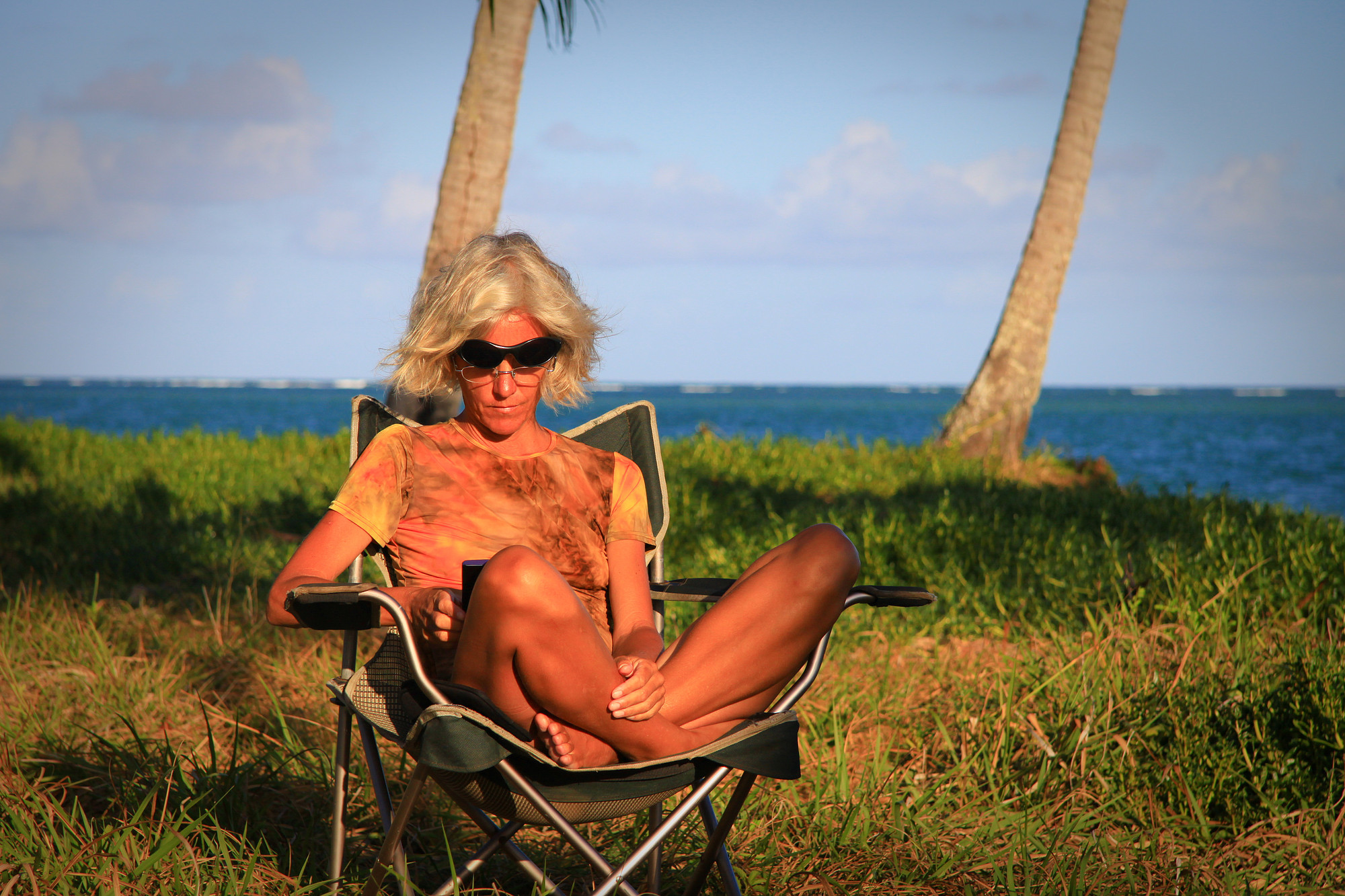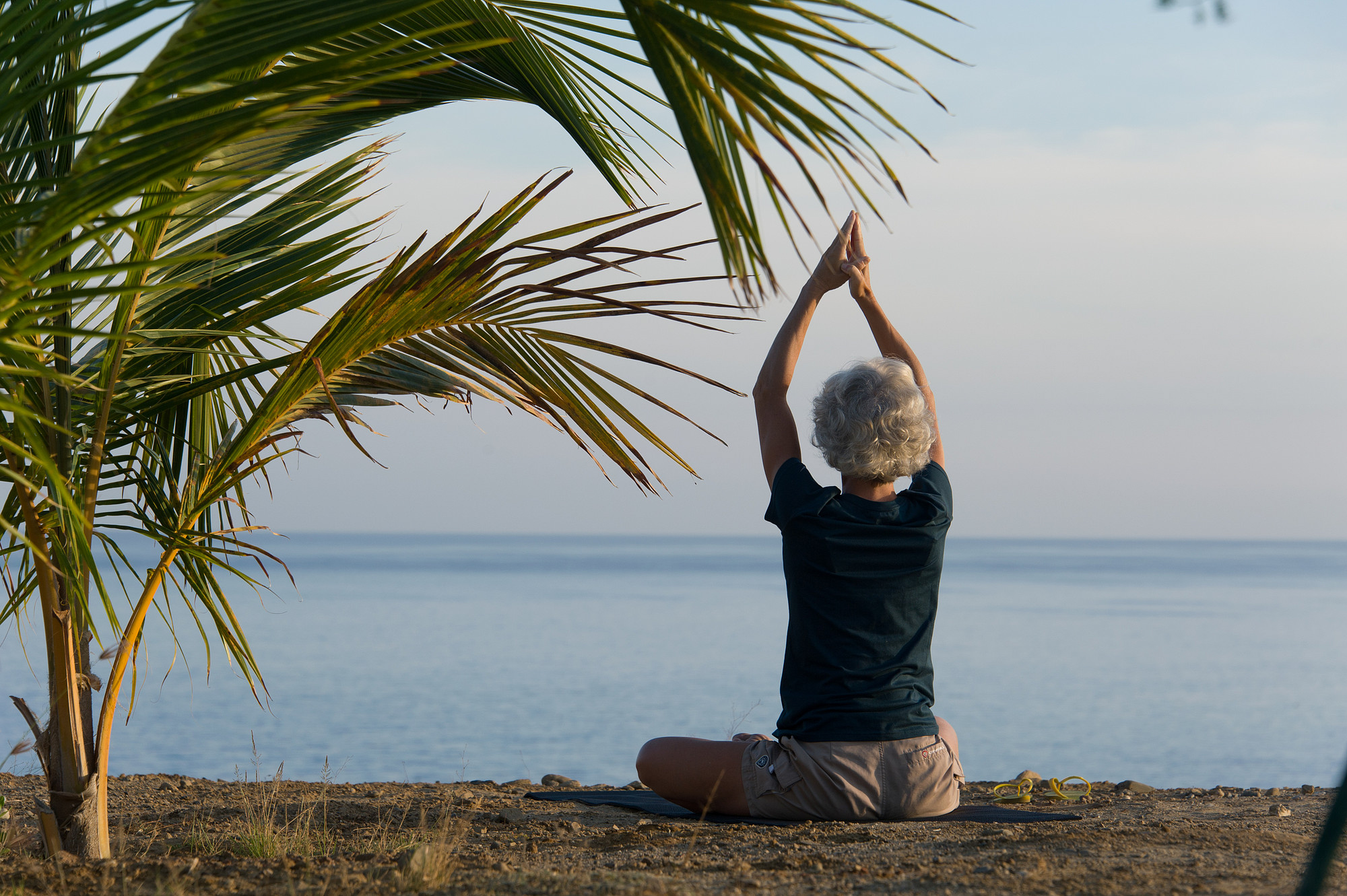“Sorry to interrupt. Coen, on the bed are clean socks, underwear, and a shirt. The shower is all yours,” I said as I walked into the living room of our friend’s home in Bolivia. Coen and our host Willy were having a discussion while I had been doing chores and had just finished taking a shower. Two pairs of eyes turned my way, Coen’s neutral, but Willy’s eyes opened as she fell silent.
“Did I hear what I just heard?” she asked.
“What?”
“You decide which clothes he wears? You pick his underwear?!”
“Of course. I always do.”
Her eyes grew wider, which made me reflect on our exchange for a moment. I laughed. “Well, yes, that does sound odd, doesn’t it?”

From the beginning of our trip, I have dug up clothes for both of us from one of the storage compartments. Just as I dig up anything else that is in those compartments. Small and agile, I move around with much more ease in the back of the Land Cruiser than Coen. Initially, I may have asked what he wanted to wear and too often he may have answered “It doesn’t matter,” so I stopped asking. I can’t remember. We do know it has never been an issue. In Willy’s home, we discussed our division of labor and I realized that ours is about the most traditional imaginable. What a world of difference from the time I lived with my ex-partner with whom I fought forever about who was to clean the toilet, with me mostly starting those discussions and ranting about how we should share the household chores.

During our 15 years on the road, I have done most of the laundry, most of the dishes, as well as all the cleaning and organization of the Land Cruiser’s bowels. Cooking is one of the few tasks we have often shared; the task has never “belonged” to either of us. Over the years people have remarked on this female side of our division of labor. However, interestingly, nobody has ever has remarked, “Really? You don’t fix the car? Coen always has to do that?!” Apparently, the fact that he, the man on the team, takes care of mechanical issues is a given. And, in our case, it’s true. I have never fixed the Land Cruiser. I have not even changed a tire (I do dig up the tools and put them away again). This has always been Coen’s job, just like taking care of bureaucratic rigmaroles, organizing visas, and car papers.

This story is not about how things should be done by anybody. Are you a couple that loves sharing everything? Great! Are you a couple where the woman prods into the car’s engine and hubs and the man does the laundry? Fantastic. This story is about how Coen and I have lived together 24/7 for the past 15 years in and around a Land Cruiser without killing each other and—most of the time—in harmony. If you are struggling to find that harmony on the road, maybe you’ll find something useful here worth giving a try.

Despite having these tips incorporated into our own relationship, it doesn’t mean we never screw up. We do. We fight, we argue. And that’s okay. Life isn’t meant to be always good, perfect, easy, and fine. Struggles, disappointments, pain, and grief are all part of life. Some of these things we can influence, others we don’t. Living together 24/7 in and around a car is no small feat and a long overland journey is not a holiday. Finding the right balance is key.
Let’s take a look at what we’ve learned over the years.
1. Create personal space.
Tip: If you feel you don’t have enough time for yourself, divide your tasks. It doesn’t matter how, just search for a way that feels good for both of you.
Our division of labor is about creating personal space. About not sharing every single action or even having to discuss them, as in, “Will you do this, while I do that.” Of course, we help each other and situations aren’t always as black and white as I state them here.


We share so much already, the whole journey, our work as freelancers, and therefore it’s a necessity to do some things alone as well. In most relationships, you’ll automatically have a form of personal space, time away from your spouse because of your work, sports club, friends. This often takes you physically away from each other for hours (or longer) at a time. We don’t have that except for the days that Coen goes to workshops and I do my own thing elsewhere. By creating our own domains within our small world, we create a form of personal space.
2. Allow for outbursts and do not take them personally.
Tip: Acknowledge that, in most cases, there is nobody else to run down when the going gets tough and things go pear-shaped.
During our 1.5 years in Pakistan, India, and Bangladesh we were regularly at each other’s throats. When the words “you ALWAYS” and “you NEVER” become part of the explosion, realize it’s not about you. The other person is stressed out. In the tropical heat of the subcontinent, forever surrounded by a massive number of local people demanding our attention, and amidst the most maddening and life-threatening traffic in the world (above which hovered guardian angels to save our lives) these were exhausting countries to travel in. On the subcontinent, we argued like nowhere else.

The tricky part about living together 24 hours a day, on and around a surface of about 90 square feet, is the absence of escape. We can’t get away and take refuge in a friend’s house, our jobs, or a sports club. Without friends around to complain to, we have only each other to run down. It results in tempers rising quickly and high, with emotions direct and intense. This has a positive side as well. Most of our irritations are settled rapidly, as there are no deep underlying emotions or hard feelings that need to be talked about or analyzed.
3. Embrace each other’s differences.
Tip: Use each other’s characteristics to advantage on your journey.
Coen is an extrovert and bold; I am an introvert and (often) shy. This means Coen enjoys talking to everybody, all the time. I like talking to people as well but not always—I also need time to retire into my own world with or without a book.
Coen likes to be in control and so it suits us both that he negotiates deals, works his way through bureaucratic hierarchies to achieve seemingly impossible things (like a one-year visa for India, or car papers for Venezuela after two weeks of having obstacles thrown in our faces by the officials). On the other hand, my reading sprees have led to adventures because I read about places and regions of interest that are not in regular guidebooks and far away from the commonly traveled routes.



“Embracing” is taking it one step further than “respecting.” To respect each other’s characteristics is fundamental, which is not the same as understanding them. You don’t have to understand everything about your spouse; I even believe that may be a mission impossible.
4. Acknowledge pessimistic and optimistic moods.
Tip: Don’t expect the other to be in a good (or bad) mood just because you are.
During our 750-kilometer hike in South Korea, I had one of those days that I wondered why I had bothered getting up at all. I had no energy whatsoever and every step hurt. It rained, the forested mountains were obscured in dark-grey clouds. The steep, narrow tracks were so slippery that with two steps up we slid one step down. I was complaining but Coen wasn’t responding. I felt ignored and started an argument.
Coen responded, using few, very clear words, “It’s okay for you to feel down. Just don’t take me down with you.” That was such a wise remark and, fortunately, I acknowledged it. I fought my own struggle, Coen hiked on at his happy pace, quickly out of sight. At the top of the mountain, he dropped his backpack, turned around, went down, took mine, and hiked up once more. It gave me time to breathe, think, recover and find my smile back.

 At other times, Coen is the pessimist and I the optimistic one, taking the lead. Both moods are valuable in a relationship. They make sure that as a duo, there is a balance in being watchful (e.g. bringing up the “what if” in possibly dangerous situations) versus challenging yourself, leaving your comfort zone, and having an adventure.
At other times, Coen is the pessimist and I the optimistic one, taking the lead. Both moods are valuable in a relationship. They make sure that as a duo, there is a balance in being watchful (e.g. bringing up the “what if” in possibly dangerous situations) versus challenging yourself, leaving your comfort zone, and having an adventure.
5. Live outdoors as much as possible.
Tip: Allow for some time in nature.
Driving, sightseeing, interacting with people are all part of overlanding and they are fascinating and rewarding. All of them are important aspects of our nomadic life. They are intense, too, and therefore we need quiet time. Lots of it. To digest, to rest, to regain energy.

 Overlanding gives you the most spacious home in the world: the outdoors. Rough camping and going deep into the wilderness, void of people, is a big part of our life. Here we feel free, breathe clean air, have all the space we want for ourselves. If the wilderness isn’t for you, opt for city parks, national parks, or just a big grassy field somewhere. In the outdoors, in the fresh air, we connect with ourselves as well as with nature.
Overlanding gives you the most spacious home in the world: the outdoors. Rough camping and going deep into the wilderness, void of people, is a big part of our life. Here we feel free, breathe clean air, have all the space we want for ourselves. If the wilderness isn’t for you, opt for city parks, national parks, or just a big grassy field somewhere. In the outdoors, in the fresh air, we connect with ourselves as well as with nature.


Here, far away from everybody and everything, we have our greatest adventures. It’s in the wilderness where we realize time and time again that we are the luckiest people in the world to live a life on the road.
6. Combine tip 1 and 5.
The most obvious one, I guess: Bring your hobbies and passions to the road. Go for a run, do yoga, bring your mountain bike, surf or SUP board— whatever makes you tick. Have adventures by yourself while enjoying the great outdoors.



Which leaves me with one question: What are your tricks to stay sane when traveling together for a long period of time?



2 Comments
W. van Willigen
August 24th, 2018 at 1:37 amHallo lieve mensen,
Wat een fijn verhaal en wat een excellent foto’s als begeleiding met de vraag of jullie met die sterrenfoto een stijve nek hebben gekregen :). Dit is natuurlijk ook toepasbaar op relaties van gewone 🙂 zielen die niet de hele tijd fysiek rondtrekken. Dit soort verhalen helpen altijd weer om in mijn eigen relatie nog weer even positiever en beter te handelen (en te interpreteren).
Abrazo Willy
Ps En ja, grappig dat je met Bolivia en mijn opmerking destijds start!
MamMonique
August 26th, 2018 at 7:00 amGeweldig leerzaam stuk! Mooi geschreven Karin-Marijke. Ik zou zeggen: lekker zo verder… ?